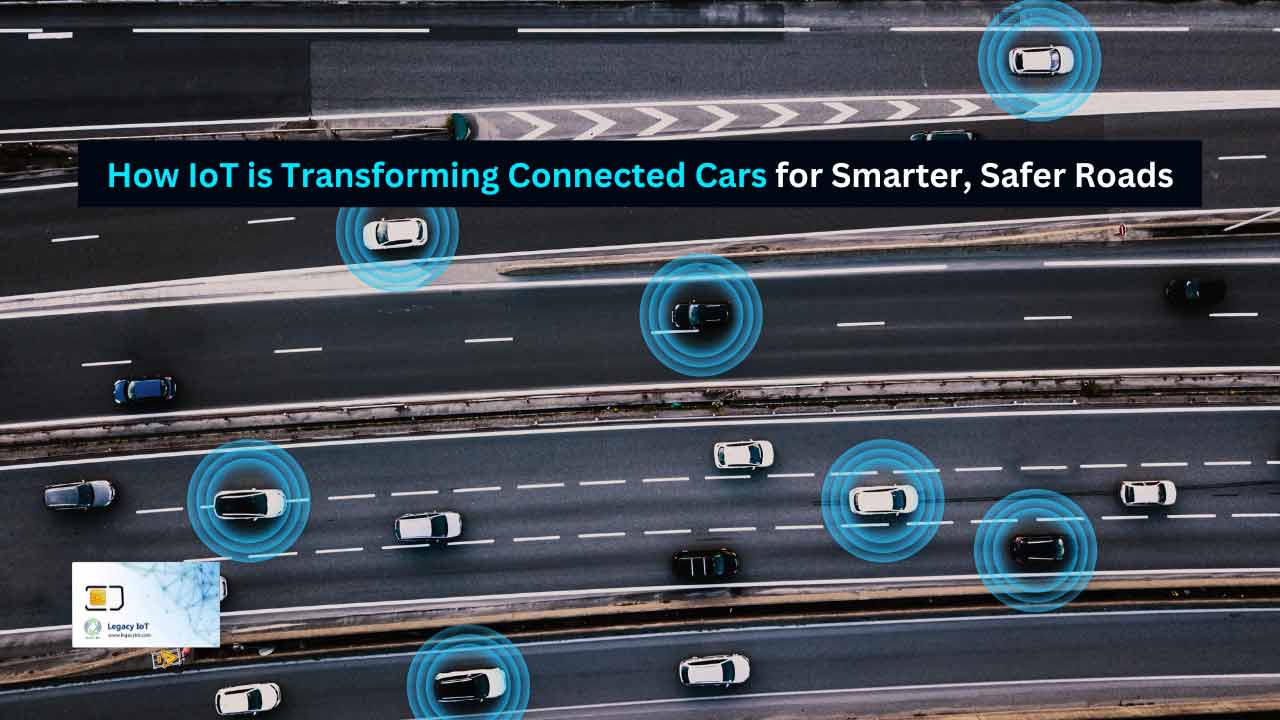The Future of Connected Cars: How IoT is Shaping Smarter Driving
The automotive industry is witnessing a paradigm shift driven by the integration of the Internet of Things (IoT) and artificial intelligence (AI). With the advent of connected cars, our vehicles are no longer just modes of transportation—they’re evolving into intelligent systems that communicate, learn, and optimize the driving experience.

At the forefront of this transformation is Legacy IoT, offering cutting-edge IoT connectivity solutions that power real-time insights and seamless data communication between devices. As we move toward an era of automation and smart mobility, let’s explore how IoT is redefining the concept of driving.
1. Enhanced Road Safety with IoT-Enabled Features
Modern connected cars come equipped with an ecosystem of IoT-enabled sensors and smart cameras. These devices work in unison to monitor road conditions in real-time—identifying obstructions, pedestrians, or potential hazards. This constant vigilance helps prevent accidents and improves reaction times for drivers.
The goal of IoT and AI-powered advanced driving assistance systems (ADAS) is to reduce human error. From automatic emergency braking to lane departure alerts, these systems contribute to safer and more intuitive driving experiences.
2. Vehicle-to-Vehicle (V2V) Communication: The Next Frontier in Safety
Vehicle-to-vehicle (V2V) communication is a game-changing application of IoT in automotive technology. It makes it possible for linked vehicles to share information about their direction, speed, and location. By sharing this critical information, vehicles can anticipate each other’s actions, significantly reducing the chances of collisions.
Imagine a scenario where one vehicle detects a hazard and immediately alerts nearby vehicles. This real-time communication empowers drivers to make informed decisions and improves traffic coordination—especially in congested urban environments.
3. Automotive Telematics for Real-Time Monitoring
IoT is transforming automotive telematics by providing constant connectivity between vehicles and cloud systems. Telematics allows fleet operators, service providers, and individual drivers to access detailed insights into a vehicle’s performance.
Connected cars can now report fuel levels, engine diagnostics, tire pressure, and even predict maintenance needs. This ensures timely servicing, reduces vehicle downtime, and improves fuel efficiency—all while saving money in the long run.
Legacy IoT delivers scalable telematics solutions that help businesses track and manage their fleet operations with precision and transparency.
4. Connected Infotainment: Personalizing the Drive
Beyond safety and performance, connected cars are also revolutionizing in-car entertainment and information. IoT enables infotainment systems to offer navigation assistance, live traffic updates, weather forecasts, and even voice-controlled media.
Whether it’s streaming your favorite playlist, tuning into the latest podcast, or checking real-time news updates, Internet of things (IoT) ensures that every ride is both enjoyable and informative. These infotainment systems also integrate with smartphones and smart assistants, making every journey feel like a tech-powered experience.
5. Predictive Maintenance through IoT Sensors
Traditional car maintenance is reactive. You wait until something breaks. But with IoT-powered diagnostics, cars are now proactive. Embedded sensors such as vibration detectors, temperature monitors, and impact sensors continuously gather data about vehicle performance.
Using this data, AI algorithms can detect anomalies and alert the driver via IoT management platform or mobile apps before a breakdown occurs. By fixing problems before they become more serious, this predictive maintenance strategy not only increases the vehicle’s lifespan but also improves safety.
6. Autonomous Driving: IoT and AI Leading the Way
The concept of autonomous driving is rapidly moving from a pipe dream to a reality. With IoT and AI integration, vehicles can now interpret data from the environment, make decisions, and navigate roads without human input.
Self-driving technology uses a combination of radar, LiDAR, GPS, and camera systems to perform real-time analysis and actions. IoT makes this possible by offering ultra-low latency communication and robust data processing capabilities. The foundation for an ecosystem of completely autonomous driving is being laid by these developments.
7. Smarter Cities Start with Smarter Cars
As cities become more connected, so do their transportation systems. IoT integration in cars is vital to building smart cities where vehicles, traffic signals, and infrastructure communicate seamlessly.
Through IoT platforms like those offered by Legacy IoT, urban planners can gain valuable insights into traffic flow, accident-prone zones, and transportation inefficiencies. The result? Better public transport, optimized road layouts, and cleaner, greener mobility solutions.
Conclusion
The evolution of connected cars, powered by IoT in automotive, is no longer a futuristic concept—it’s here, and it’s transforming how we move, drive, and live. From safer roads and smarter navigation to predictive diagnostics and personalized infotainment, IoT is reshaping every touchpoint of the driving experience.
With Legacy IoT providing scalable, reliable connectivity infrastructure, automakers and tech companies alike are driving us into a more efficient, safer, and smarter automotive future.





